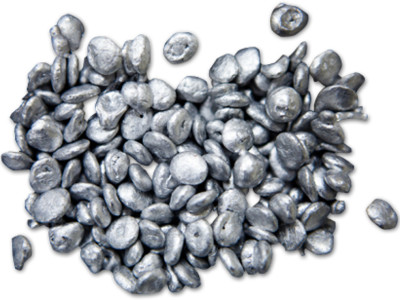Selecting the Correct Instrument for the Job
Not all methods are created equal
Sometimes, the available tool is not the right tool for the job.
A manufacturer found some small metal fragments in one of its products. Several samples of this contaminant were analyzed by X-ray fluorescence and identified as stainless steel. A subsequent internal investigation failed to find any sources that were consistent with the particular stainless steel that was identified.
The food manufacturer then decided to consult Microtrace. We were asked to conduct a higher level analysis to identify the specific type of stainless steel comprising these particles. As an initial step, we analyzed several of the particles by energy dispersive x-ray spectroscopy and found, to our surprise, that the particles were not stainless steel, but aluminum. Further analysis by backscatter imaging in the scanning electron microscope showed small inclusions in each particle that were composed of the high atomic number elements chromium, iron, and nickel- the components of stainless steel.
Examination of the morphology of the fragments showed the presence of tool marks, which provide the manufacturer with additional information about the way in which these particles were produced. Furthermore, the stainless steel particles embedded in the aluminum were present at the origin of the toolmarks.
This information led the manufacturer directly to the source of the aluminum particles and the fine, embedded particles of stainless steel (a shearing tool). In this way, the client was able to not only identify the source of the metal, but also identify the root cause of the particle production.
Why had analyses at two labs produced such different results?
Both x-ray fluorescence (XRF) and energy dispersive x-ray spectroscopy (EDS) are useful instruments to the analytical laboratory. The key to this scientific investigation was the selection of the correct instrument for the job. Thus, the experience and expertise of the examining scientist was pivotal. The first lab used x-ray fluorescence because that was the instrument they had, and using it was their standardized procedure for the analysis of an unknown material. However, it was not the correct tool for this particular investigation. XRF is primarily sensitive to elements heavier than silicon, such as the iron found in stainless steel. Because of this, the instrument prioritized steel in its detection, even though it was only a trace contaminant. The major component, aluminum, was not detected due to the low sensitivity for this element by XRF. In contrast SEM-EDS is sensitive to elements as light as beryllium. Although XRF offers lower limits of detection for certain elements, in this case, the broader range of elements detected by EDS provided the information needed to solve this problem.
The Microtrace difference
Microtrace’s state-of-the-art microanalytical laboratory contains all of the scientific instruments necessary to investigate these types of problems. But having advanced analytical instruments is not enough. Our experts, guided by decades of experience and continuing education, are able to properly apply this wide spectrum of analytical methods to the specific questions of a particular investigation.
Our conclusions are not obtained from cook-book methods and flow-charts, but from expert observations assisted by the reasoned application of appropriate tests and instrumentation.
How May We Help You?
Contact usto discuss your project in more detail.








